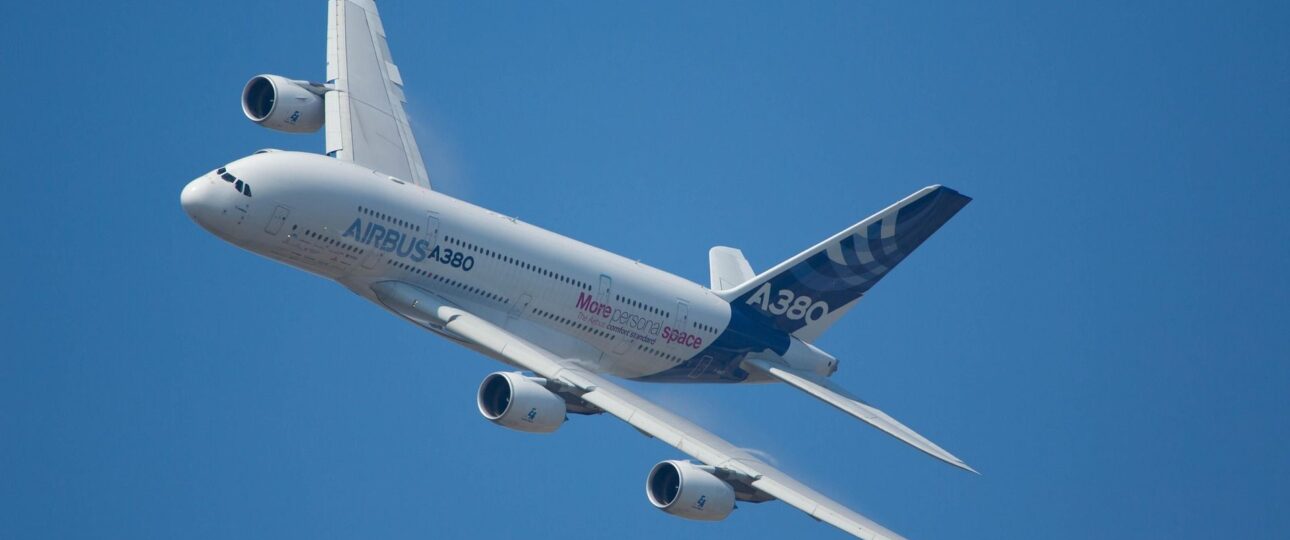The Ultimate Guide to Booking Affordable Flights

Insider Tips from an Air Ticketing Expert
Travel dreams often feel out of reach. High flight costs stand in the way. Does it feel like affordable airfare is just a myth? Many people put off trips because they think flights are too expensive. Imagining far-off places can be tough when air tickets cost so much.
But what if you could find really cheap flights? An air ticketing expert knows the secrets. They understand how airlines price tickets. This guide shares their deep knowledge with you. You’ll learn how to save big on flights. Get ready to travel more without emptying your wallet.
Master the Art of Timing: When to Buy for the Best Deals
Buying your flight at the right time is key. It’s not just about luck. Smart travelers use data to make choices. Knowing when to click “buy” can save you a lot of money. We will show you how to beat the system.
The “Sweet Spot” for Booking: Finding Your Ideal Window
There’s a best time to buy plane tickets. This is often called the “sweet spot.” For domestic flights, prices are usually lowest one to three months before you fly. For international trips, aim to book two to eight months out. Seasonality plays a big role here. High demand times like holidays will always be pricier.
Start looking for flights early. This lets you watch prices. But don’t book too far ahead. Airlines might change schedules or prices again. Waiting for that perfect moment pays off.
Day of the Week and Time of Day Strategies
The day you buy your ticket can affect the price. Many experts suggest searching on Tuesdays and Wednesdays. Airlines often release new deals early in the week. Other airlines match these low prices. This creates a small window for good deals.
Think about when you fly, too. Flights leaving late at night or early in the morning are often cheaper. Many people prefer to travel during the day. This lower demand helps drop prices for odd hours. Being flexible with departure times can save money.
Leveraging Off-Season and Shoulder Season Travel
Flying during off-peak times means lower prices. This is when fewer people want to travel. “Shoulder season” is the time right before or after the main travel season. For instance, flying to a European city in May or September is cheaper than in July. July is prime tourist time.
Off-season travel means less crowds. You get a better experience, too. Always try to be flexible with your travel dates. This lets you grab those amazing low-demand fares.
Embrace Flexibility: Unlocking Hidden Savings
Being open to change is a traveler’s best friend. Small shifts in your plans can mean huge savings. Think about more than just the flight itself. Your whole trip can become more affordable.
Flexible Dates: The Power of a Few Days’ Difference
Shifting your travel dates just a little can change flight costs a lot. Flying on a Tuesday instead of a Friday might cut hundreds off your ticket. Airlines offer tools to show prices for a whole month. This makes finding cheaper days easy.
Always use flexible date search options. Most airline and travel sites have them. “A savvy traveler understands that flexibility is often the most potent weapon against high airfares,” notes one air ticketing expert. This simple change unlocks so many hidden savings.
Flexible Destinations: Exploring New Horizons for Less
Don’t fixate on just one place. Maybe your dream city is too pricey this year. Consider a nearby city or a less popular spot. Flying to a major city like London or Paris can cost a lot. But a smaller, charming city might be much cheaper.
Use “explore” or “everywhere” search features. These tools show you the cheapest places to fly from your city. You might discover a new favorite spot. It lets you see the world for less.
The Advantage of Nearby Airports
Sometimes, flying from a different airport saves money. Or arriving at a smaller airport near your destination can be cheaper. Major city airports often have higher fees. These costs pass to the traveler. Smaller airports might avoid these extra charges.
Always check flight options for airports close to your origin or final stop. Even if it means a short drive, the savings can be worth it. Factor in ground transport costs to ensure true savings.
Smart Searching: Tools and Techniques for the Savvy Traveler
Finding cheap flights needs good tools. You also need smart search habits. These steps help you find the best deals out there. You will become a pro at hunting for low fares.
Utilizing Flight Comparison Websites and Aggregators
Websites like Google Flights, Skyscanner, and Kayak are your friends. They gather prices from many airlines. This lets you compare options side-by-side. You see a clear picture of what’s available.
Make sure to check several comparison sites. Sometimes, one site has a deal another misses. Bookmark your favorites and check them often. They are great starting points for any flight search.
The Power of Incognito Mode and Clearing Cookies
Have you heard that flight prices go up if you search too much? It’s a common belief. Using incognito or private browsing mode helps. It stops websites from using cookies to track your searches. This way, the prices you see should stay fresh.
Try searching in a private window. You can also clear your browser’s cookies before searching again. It’s a simple step that might help you avoid inflated prices.
Setting Up Fare Alerts and Price Tracking
Nobody wants to check flight prices all day. Fare alerts do the work for you. Many travel sites let you set up email alerts. You get a notification if the price drops on your chosen route. This saves you time and effort.
Sign up for price tracking tools. They watch the market for you. You will know the best moment to buy. It’s a smart way to monitor costs without constant manual searching.
Beyond the Ticket Price: Understanding Additional Costs
A cheap flight can quickly become expensive. Extra fees can add up fast. Knowing these hidden costs helps you avoid surprises. It’s smart to see the full picture.
Navigating Baggage Fees: Carry-on vs. Checked
Airlines have different rules for bags. Low-cost carriers often charge for everything. A checked bag can cost $30 or more one way. Your small carry-on bag might even have a fee. Always check the airline’s specific baggage policy.
Pack light to avoid these fees. Using only a personal item or a free carry-on saves money. Measure and weigh your bags before you go. This stops airport surprises.
Seat Selection, In-Flight Meals, and Other Add-ons
Many cheap fares don’t include extras. You might pay to pick your seat. Meals, snacks, and even water can cost extra. Wi-Fi and entertainment often come with a fee too. These add-ons can make a “cheap” ticket much pricier.
Compare the total cost, not just the base fare. Sometimes, a slightly more expensive ticket from a full-service airline is a better deal. It might include bags, meals, and seat choice. Know what you are paying for upfront.
Hidden Fees and Currency Conversion
Watch out for fees when paying. Some credit cards charge foreign transaction fees. These can be 1-3% of your total. Also, avoid “dynamic currency conversion.” This is when you’re offered to pay in your home currency overseas. It often uses a worse exchange rate.
Use a travel-friendly credit card with no foreign transaction fees. Always choose to be charged in the local currency of the airline’s country. This simple step saves you money.
Leveraging Loyalty Programs and Alternative Booking Methods
Smart travelers use more than just comparison sites. Loyalty programs can bring big savings. Other booking methods might also offer hidden deals. Explore all your options to cut costs even more.
Maximizing Airline Loyalty Programs and Frequent Flyer Miles
Airline loyalty programs reward you for flying. You earn miles or points with each trip. These can pay for future flights. Airline alliances, like Star Alliance, let you earn miles across many airlines. Co-branded credit cards also give bonus miles.
Sign up for loyalty programs, even if you don’t fly often. The points can add up. You might get a free flight or an upgrade faster than you think. It’s like getting paid to travel.
The Appeal of Budget Airlines and What to Watch For
Budget airlines offer very low base fares. Think Spirit or Ryanair. They can be a great way to save money. But they often charge for everything extra. This includes seat selection, printing your boarding pass, and carry-on bags. Their rules are usually strict.
For example, a flight might cost $50. But then you add $30 for a carry-on and $10 to pick a seat. Suddenly, it’s $90. Always read the fine print. Factor in all potential add-on costs. Only then compare them to traditional carriers.
Considering Package Deals and Error Fares (with caution)
Sometimes, buying a flight and hotel together saves money. Travel agencies offer these package deals. They can be a good value. “Error fares” are very rare. These happen when an airline accidentally posts a super low price. They are exciting but come with risks.
If you find an error fare, book quickly. But be careful. Airlines can cancel these tickets. If you book an error fare, only book refundable hotels or plans. This protects you if the flight gets canceled.
Conclusion
Booking affordable flights is not a mystery. It’s about knowing the best strategies. By timing your purchase right, staying flexible, and using smart search tools, you can save big. Remember to look beyond the ticket price for hidden costs. Also, consider loyalty programs and budget airlines with caution.
With this expert advice, affordable travel is within reach. You have the power to travel more often. Start planning your next adventure today. The world awaits, and it doesn’t have to cost a fortune.


3 Comments
This is exactly what i was looking for, thank you so much for these tutorials
It would be great to try this theme for my businesses
What a nice article. It keeps me reading more and more!